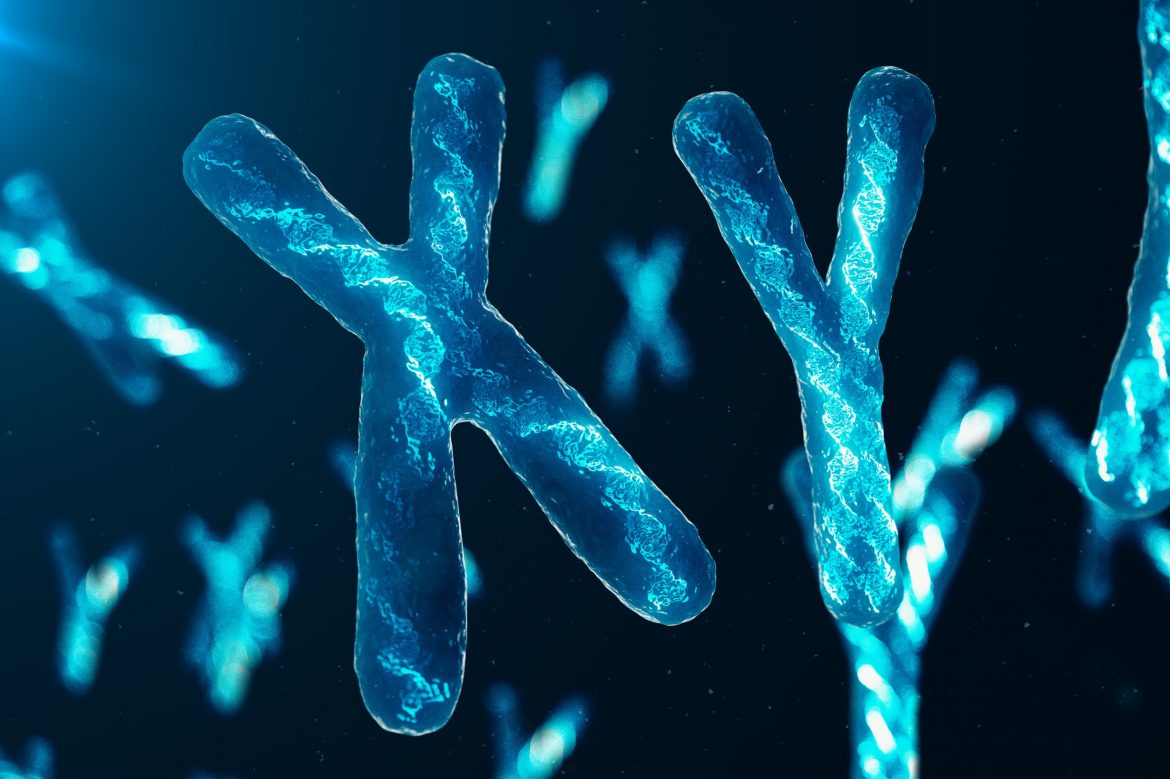
Unveiling the Mysteries of the Y Chromosome
The Human Genome Project was officially declared complete on April 14, 2003. This historic announcement marked the successful completion of the initial sequencing of all 46 human chromosomes including the two sex chromosomes, X and Y. When the project was declared complete, only some of the chromosomes were fully sequenced. For example, the human X chromosome was sequenced with relatively high accuracy and completeness during the HGP, but this was not the case for the Y chromosome.
Now, 20 years after the Human Genome Project was declared complete, the Telomere-to-Telomere (T2T) consortium has fully sequenced the elusive Y chromosome for the first time and published its findings in Nature. The findings add 30 million new base pairs of sequence and 41 additional protein-coding genes to the human genome reference.
These data will provide crucial insight for those studying important questions related to reproduction, evolution, and population change.
The human Y chromosome is best known for its role in determining the male sex. It contains a specific gene (SRY), which triggers the development of male gonads (testes) during embryonic development. It also has several genes involved in the production of functional sperm cells, and the development of male secondary sexual characteristics -such as facial hair, a deep voice, and muscle mass.
It is one of the smallest chromosomes in the human genome and contains fewer genes than the X chromosome (and most of the other 22 non-sex chromosomes). However, its role in determining male sex and influencing male-specific traits makes it important. It also contains genetic markers (like the AMELY gene) that are used in forensic DNA analysis and paternity testing. These markers are inherited exclusively from fathers to sons and can be used to trace paternal lineage.

Why did it take 20 years to fully sequence the Y chromosome?
The reason was its unique characteristics and structural complexity. In the early days of sequencing technologies, its small size made it technically difficult to isolate the chromosome and sequence it accurately. The chromosome contains a high density of repetitive sequences, which also makes it hard to work on. Early DNA sequencing methods relied on breaking DNA up into small pieces and then reassembling the pieces by looking for regions where they overlap. Naturally, the technique does not work when there are lots of identical pieces. The chromosome also contains palindromic sequences, which read the same forwards and backward (like TACCAT). These sequences can be confusing when you are trying to decide which direction the sequence should be read. The cherry on top, it contains regions that are highly variable among individuals, further complicating things. The fact that it has very little homology (similarity) with the X chromosome was another challenge for researchers, as it meant they did not have much to compare and match the sequences.
Still, the researchers did not give up and finally made it. “Just a few years ago, half of the human Y chromosome was missing [from the reference],” says Monika Cechova, co-lead author of the paper, “Back then we didn’t even know if it could be sequenced, it was so puzzling. This is a huge shift in what’s possible.” What helped the researchers to finally read and sequence the Y chromosome accurately was the advances in long-read sequencing technology and new, innovative computational assembly methods that could deal with all the difficulties we have mentioned.
Understanding the Y chromosome’s structure and function is important in reproductive medicine and genetic counseling, and in understanding the genetic basis of sex-related diseases. The Y chromosome also provides insights into human evolutionary history and population genetics, as researchers make use of the variations in this chromosome to trace the migration and divergence of human populations over time.
REFERENCES
- 1. https://scitechdaily.com/y-not-the-full-story-behind-sequencing-humanitys-most-elusive-chromosome
- 2. https://www.newscientist.com/article/2388720-the-human-y-chromosome-has-been-fully-sequenced-for-the-first-time/
- 3. https://www.sciencealert.com/scientists-sequence-last-piece-of-the-human-genome-the-y-chromosome
